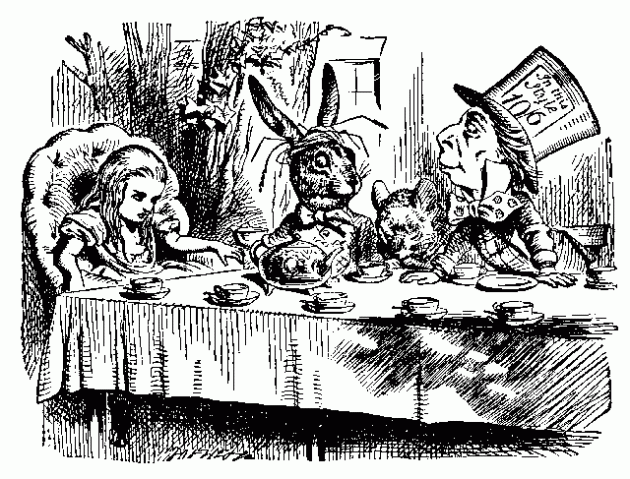 Abstraction is an interesting notion. The word itself is derived from the Latin preposition ‘ab’ meaning ‘from’ or ‘away from’ combined with the verb ‘trahere’ ‘to pull or draw’ (which also gives us our word ‘tractor’) – thus it means, literally, ‘to pull or drag away from’ so that it conveys the sense of separation, something that was embedded being removed from its original surroundings.
Abstraction is an interesting notion. The word itself is derived from the Latin preposition ‘ab’ meaning ‘from’ or ‘away from’ combined with the verb ‘trahere’ ‘to pull or draw’ (which also gives us our word ‘tractor’) – thus it means, literally, ‘to pull or drag away from’ so that it conveys the sense of separation, something that was embedded being removed from its original surroundings.
The first thing I would like to consider is abstraction in relation to numbers, which strikes me as being fundamental to the discovery of mathematics. To help us here we might imagine, in the style of Wittgenstein, a couple of ‘primitive societies’ whose use of number differs from our own.
In the first, counting is only ever done in the presence of objects: these people have no notion of mental arithmetic or ‘counting in your head’ – to say ‘1, 2, 3, 4’ when there is nothing there to count would seem to them as bizarre as if I were to say ‘monkey hat potato bicycle’ out of the blue, with none of these things being present. For them, numbers are not at all abstract – they are a property of concrete objects, unthinkable apart from them.
The next society takes the view (not unreasonably) that only similar things can be counted: sacks of wheat, say, or earthenware oil jars in a storehouse can be enumerated, but if someone is confronted by a dozen objects all different, he will point to each in turn and say ‘one, one, one…’ on the grounds that they are all different, so don’t amount to anything together. After all, no-one can say that a jar of oil is the same as a sack of wheat, can they? That would be absurd! Then one day someone, in a flash of inspiration, sees that although the objects are different, the ‘ones’ are the same, so a second teller is introduced to count the number of times the first says ‘one’ (perhaps by making marks on a slate). He is then able to say ‘there are twelve ones there’.
This will give rise to a joke, a riddle: ‘why is a monkey like a hat?’ to which the answer will be ‘because they’re both one!’ (at which all laugh heartily). (You might even imagine quick children demonstrating this to their slow parents – monkey = 1; hat = 1; 1=1, so monkey = hat! – and the parents being amazed at their children’s sagacity – ‘the things they learn in school these days!’). (Come to think of it, that might be the solution to the Mad Hatter’s riddle, ‘why is a raven like a writing desk?’ – Lewis Carroll (or rather C L Dodgson) was a mathematician)
But what interests me here is that this is the beginning of abstraction, to see that one of anything is equal to one of anything else, at least as far as counting goes – it is the dawning of the realisation that you can carry out operations with numbers without reference to what they are ‘numbers of’.
Full abstraction is the emancipation of number: it is no longer the property of objects, it is something in its own right. Nobody asks ‘what does 1 stand for here?’ or on being told to add five and five, demands ‘five of what?’ And it is when you reach that stage that you begin to discover the amazing things that you can do with numbers, the complex network of relationships that exists between them.
Another interesting thing has happened here: we have extended the meaning of ‘existence’, discovered a new order of reality. Numbers seem to exist just as surely as ravens and writing desks – if not more so – yet not in the same way. We feel sure that the propositions of arithmetic, and all the other properties of numbers, hold good always and everywhere; if all knowledge of them was lost, we feel sure they could be discovered again and that they would be the same – in fact, they seem to be unchanging and imperishable. It is little wonder that Pythagoras and his followers made a religion of them.
Which gives rise to some interesting speculation: what other properties can we abstract from their original setting and treat as things in their own right? will those exist in the same way that numbers seem to? and will they form part of a complex network of relationships that stands to them as mathematics does to number? In particular, is this something that we can do with language and words?
Could be worth investigating further, maybe. But meantime, at least you know why a raven is like a writing desk.

